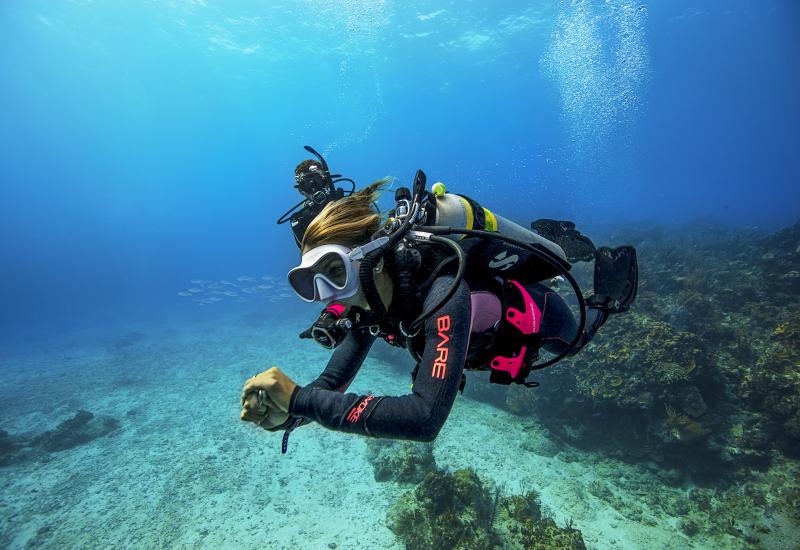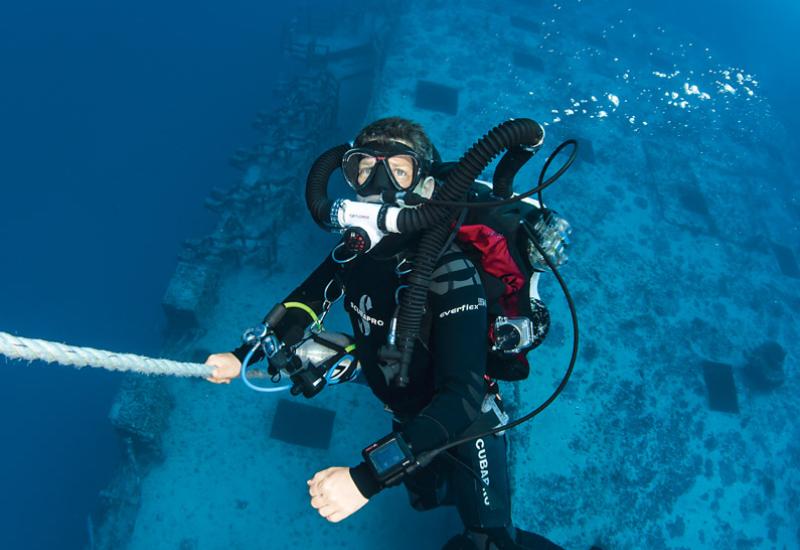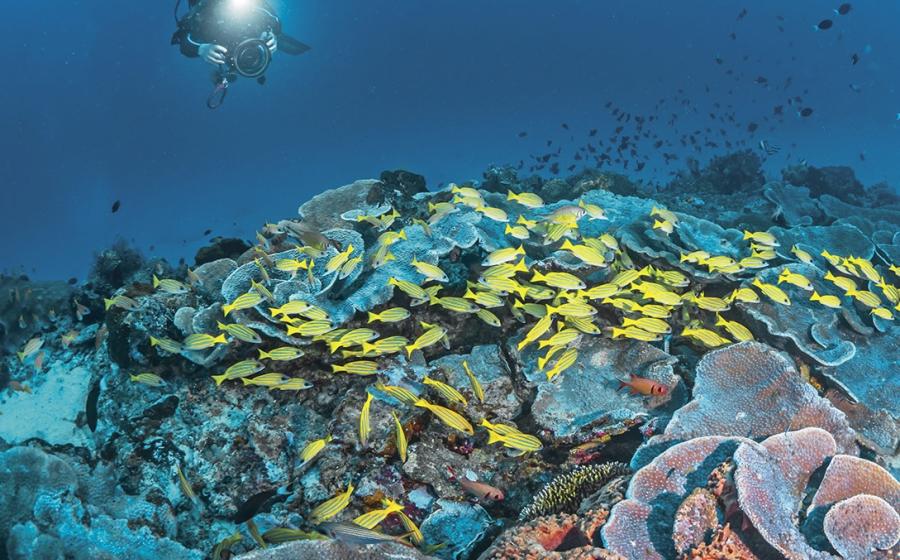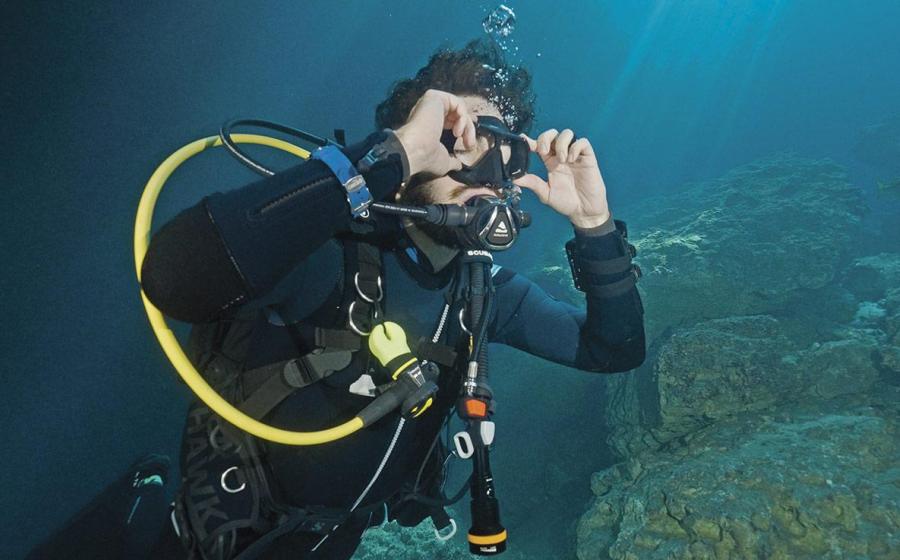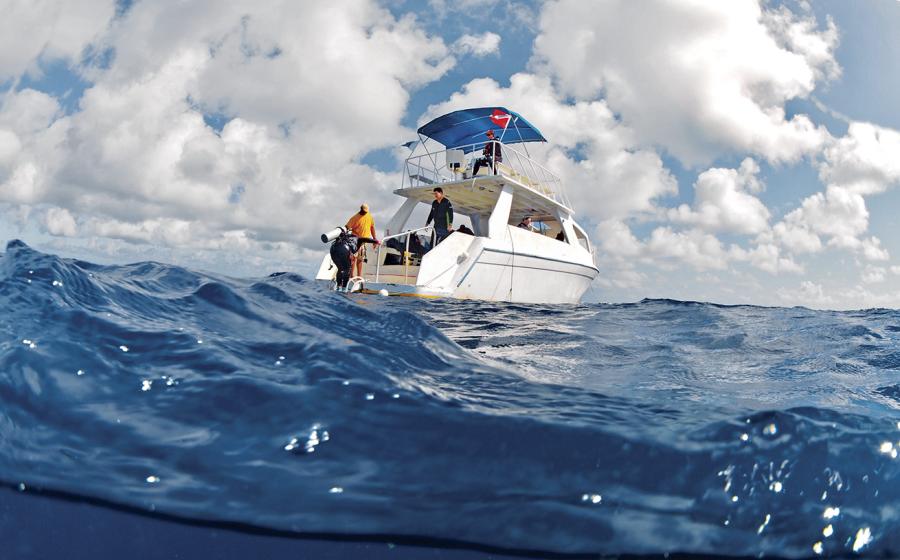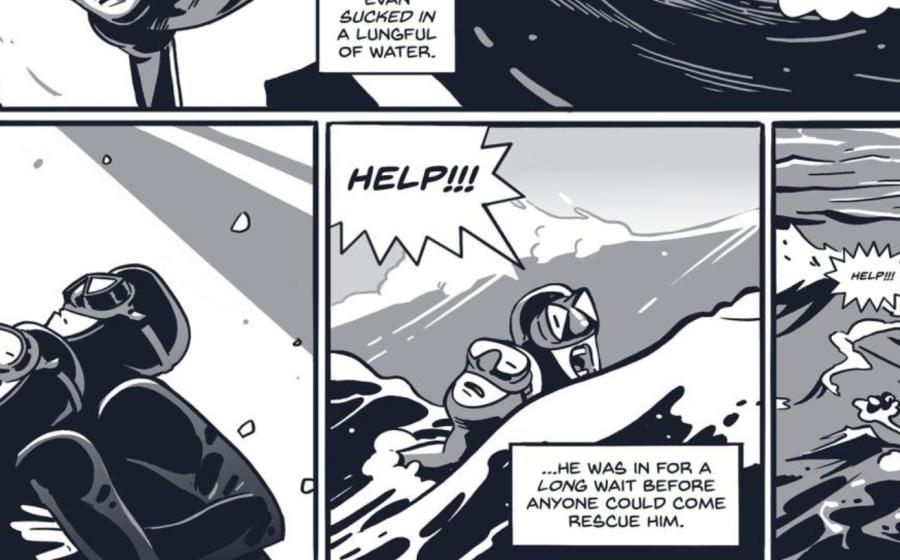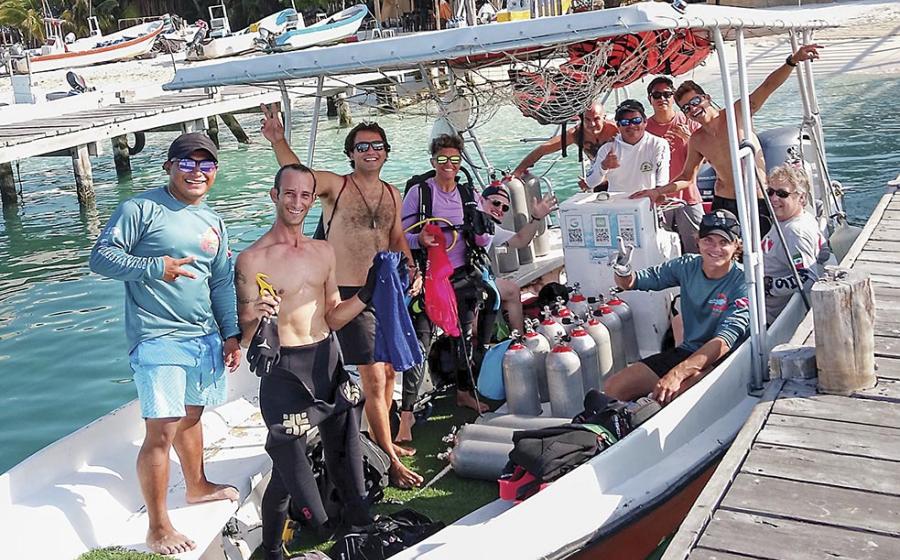Dive Hacks: Expert Tips for Drift Diving
Although ocean currents are unpredictable and dangerous at times, when Mother Nature offers a manageable push in the right direction, the result is one of the most pleasurable underwater experiences possible: drift diving.
At destinations around the world famous for this low-effort style of diving — South Florida, Tobago, British Columbia, Cozumel, French Polynesia, Palau, Indonesia, the Maldives and Red Sea — flying at high speed over scenic reefs where big pelagics come to feed and play is a rush every diver should experience. But to enjoy the ride safely, special techniques, planning and equipment considerations must be made. For an expert’s perspective, I tapped Tim Massimino from Scuba Club Cozumel. The Chicago native became a dive instructor on the Mexican island in 1976, and he’s spent the past 39 years earning his underwater wings in some of the most prime drift-diving conditions on the planet.
“It’s always best to listen to the divemaster’s briefings and ask questions if you’re not sure about something,” Massimino says. “Watch the divers who have more experience than you, and you will learn from their actions.”
Here are five of Massimino’s best tips:
STREAMLINE YOUR KIT
“The best advice for drift diving is to streamline your equipment, and make sure your hoses are secure and not dangling about,” says Massimino. Currents can exacerbate the potential hazards of an unruly kit, including entanglement and damage to the reef. Strong currents can rip first stages from mouths and swat masks off faces, so it pays to be mindful and move your head slowly. He also advises to “always have a surface marker buoy and a whistle with you in case you surface away from the boat.” And practice how to use them before the need arises.
CREATE A DRIFT-SPECIFIC PROFILE
Current complicates logistics. Your dive plan should be informed by up-to-date local knowledge of the conditions, and compensate for the added variables of speed and direction.
“A common mistake is swimming with the current,” says Massimino. Powered by the flow, “you might feel like Superman, but you’ll cover too much reef too quickly and potentially run out of reef before you run out of air.”
And know when to call the dive. “When you can’t control the pace of the dive, you might expend more energy than you’re used to and get winded,” he says.
FOCUS ON NEUTRAL BUOYANCY
Practicing proper buoyancy on every dive is not only safer, but it is also more responsible. With the added velocity of a drift dive, it can be more difficult to avoid collisions, and this diminished level of control can be dangerous to you — and the reef.
“Maintaining neutral buoyancy allows the diver to really enjoy one of the best benefits of drift diving, which is not having to expend energy to travel over the reef,” says Massimino.
Making small adjustments with your breathing and steering subtly with your body can make the difference between a smooth flight and a demolition derby.
USE THE REEF TO CATCH A BREAK
Utilize topography to your advantage. “Learn how to find the natural areas where you can duck down and get out of the current,” Massimino says. Seek shelter behind coral heads, in pockets or small caves of the wall or other structural features, and in the lee of large filter-feeding sponges, which are typically robust and plentiful on reefs swept by strong, nutrient-rich currents. Marine life invented this technique; the quiet places are also prime for critter spotting.
RIDE THE WAVE
To dial directly into the strength and direction of the flow, Massimino recommends watching the fish. “They usually face into the current and swim at a pace that maintains their position,” he says.
And if you’re compelled to stop to enjoy the view, take a photograph or wait for a buddy; don’t kick into overdrive. “Slow, steady kicks will always win out over fast and furious finning,” says Massimino.
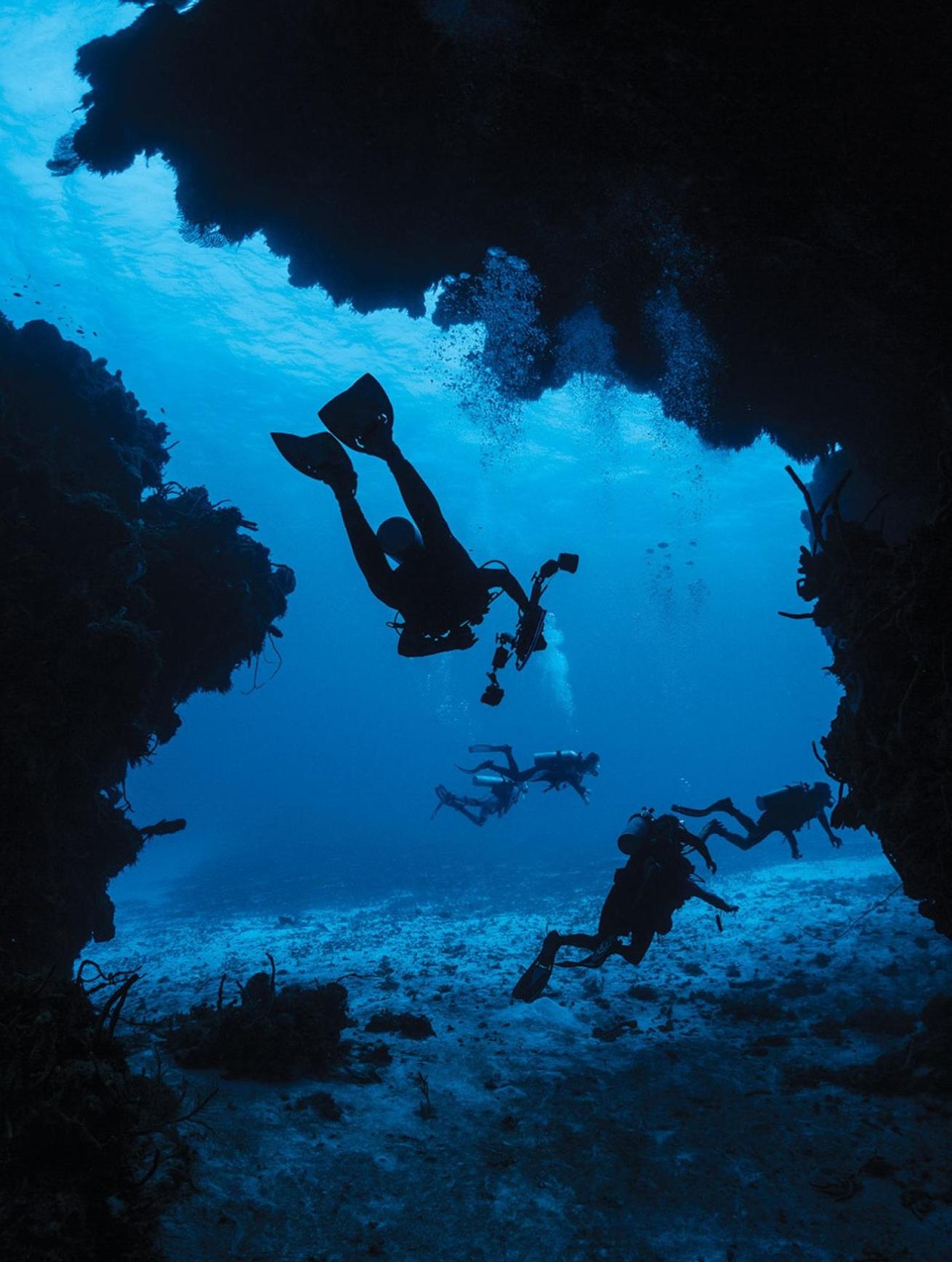
Brent DurandIn places like Cozumel, drift diving is the norm — the dive boat follows divers' bubbles.
Although ocean currents are unpredictable and dangerous at times, when Mother Nature offers a manageable push in the right direction, the result is one of the most pleasurable underwater experiences possible: drift diving.
At destinations around the world famous for this low-effort style of diving — South Florida, Tobago, British Columbia, Cozumel, French Polynesia, Palau, Indonesia, the Maldives and Red Sea — flying at high speed over scenic reefs where big pelagics come to feed and play is a rush every diver should experience. But to enjoy the ride safely, special techniques, planning and equipment considerations must be made. For an expert’s perspective, I tapped Tim Massimino from Scuba Club Cozumel. The Chicago native became a dive instructor on the Mexican island in 1976, and he’s spent the past 39 years earning his underwater wings in some of the most prime drift-diving conditions on the planet.
“It’s always best to listen to the divemaster’s briefings and ask questions if you’re not sure about something,” Massimino says. “Watch the divers who have more experience than you, and you will learn from their actions.”
Here are five of Massimino’s best tips:

Courtesy IST SportsPioneered by dive pros in the South Pacific to help their guests stay put in ripping currents by anchoring them to a section of dead reef, the reef hook has been adopted around the world. IST offers two models — a single or double hook — both made with corrosion-resistant stainless steel and 5 feet of tough 1-inch nylon webbing that tucks neatly into a compact storage pouch.
MSRP: $25; INFO: istsports.com
STREAMLINE YOUR KIT
“The best advice for drift diving is to streamline your equipment, and make sure your hoses are secure and not dangling about,” says Massimino. Currents can exacerbate the potential hazards of an unruly kit, including entanglement and damage to the reef. Strong currents can rip first stages from mouths and swat masks off faces, so it pays to be mindful and move your head slowly. He also advises to “always have a surface marker buoy and a whistle with you in case you surface away from the boat.” And practice how to use them before the need arises.
CREATE A DRIFT-SPECIFIC PROFILE
Current complicates logistics. Your dive plan should be informed by up-to-date local knowledge of the conditions, and compensate for the added variables of speed and direction.
“A common mistake is swimming with the current,” says Massimino. Powered by the flow, “you might feel like Superman, but you’ll cover too much reef too quickly and potentially run out of reef before you run out of air.”
And know when to call the dive. “When you can’t control the pace of the dive, you might expend more energy than you’re used to and get winded,” he says.
FOCUS ON NEUTRAL BUOYANCY
Practicing proper buoyancy on every dive is not only safer, but it is also more responsible. With the added velocity of a drift dive, it can be more difficult to avoid collisions, and this diminished level of control can be dangerous to you — and the reef.
“Maintaining neutral buoyancy allows the diver to really enjoy one of the best benefits of drift diving, which is not having to expend energy to travel over the reef,” says Massimino.
Making small adjustments with your breathing and steering subtly with your body can make the difference between a smooth flight and a demolition derby.
USE THE REEF TO CATCH A BREAK
Utilize topography to your advantage. “Learn how to find the natural areas where you can duck down and get out of the current,” Massimino says. Seek shelter behind coral heads, in pockets or small caves of the wall or other structural features, and in the lee of large filter-feeding sponges, which are typically robust and plentiful on reefs swept by strong, nutrient-rich currents. Marine life invented this technique; the quiet places are also prime for critter spotting.
RIDE THE WAVE
To dial directly into the strength and direction of the flow, Massimino recommends watching the fish. “They usually face into the current and swim at a pace that maintains their position,” he says.
And if you’re compelled to stop to enjoy the view, take a photograph or wait for a buddy; don’t kick into overdrive. “Slow, steady kicks will always win out over fast and furious finning,” says Massimino.

